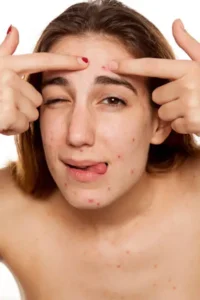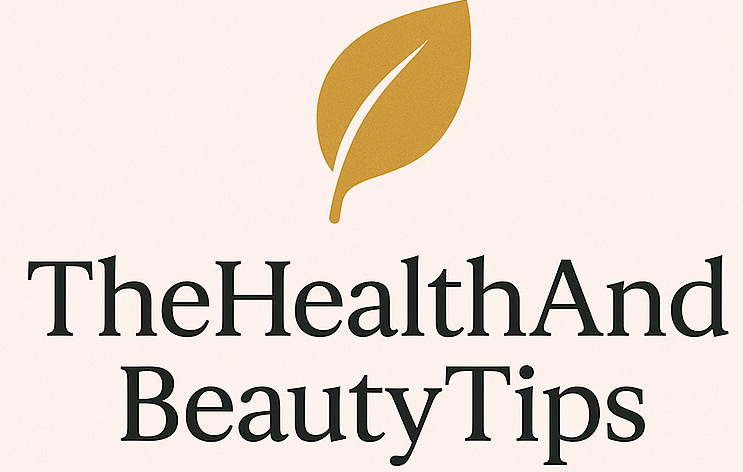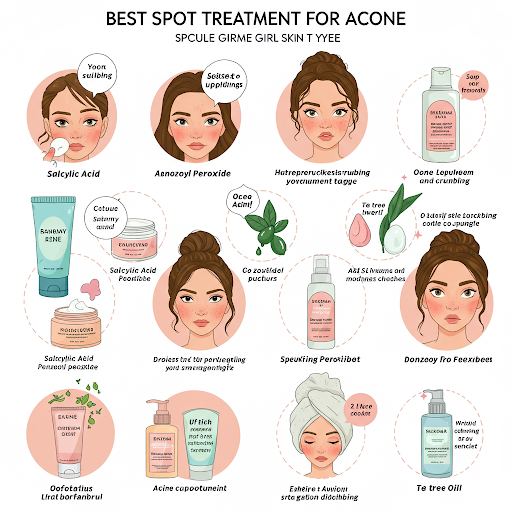Best spot treatment for acne?
Acne is one of the most common skin concerns across the world, affecting millions of people regardless of age, gender, or skin type. While most people experience acne at some point in their lives, the impact it has on one’s confidence and self-esteem can be profound. Whether you’re dealing with the occasional pimple or persistent breakouts, spot treatment for acne can provide targeted relief when you need it most.
We’ll take you through the best spot treatments for acne, their effectiveness, and how to incorporate them into your skincare routine. Plus, we’ll answer frequently asked questions about acne and spot treatments to help you make the best decisions for your skin.
What is Acne?
Before diving into spot treatments, let’s first understand what acne is and why it happens. Acne is a skin condition that occurs when hair follicles become clogged with oil, dead skin cells, and sometimes bacteria. This can lead to the formation of pimples, blackheads, whiteheads, cysts, and other blemishes. While acne is most commonly associated with teenagers going through puberty, it can affect people of all ages due to various factors like hormone imbalances, stress, poor skincare habits, diet, and genetics.
Acne usually appears on the face, chest, back, and shoulders. The severity of acne can range from mild breakouts to moderate or severe cystic acne, which can leave scars and other lasting marks on the skin. Spot treatment aims to target individual pimples and help reduce inflammation, redness, and size of the blemishes.
Understanding Acne Spot Treatments
Spot treatments are products designed to be applied directly onto a pimple or blemish. These treatments are often potent and are used to target the acne at its source. Spot treatments typically work by:
Reducing inflammation
Killing acne-causing bacteria
Unclogging pores
Drying out excess oil
Promoting skin healing
Unlike regular cleansers or moisturizers, spot treatments are formulated with concentrated ingredients that are meant to treat blemishes without affecting the surrounding skin. They’re generally meant for localized use on active pimples and are often formulated for different types of acne: from cystic and hormonal acne to blackheads and whiteheads.
Best Spot Treatments for Acne: Ingredients to Look For
To effectively treat acne, spot treatments need to contain specific ingredients that target the underlying causes of pimples. Here are the most common and effective ingredients found in spot treatments:
Benzoyl Peroxide
Benzoyl peroxide is one of the most well-known ingredients for acne treatment. It works by killing acne-causing bacteria (P. acnes) and preventing clogged pores. It also helps to reduce inflammation and redness. Benzoyl peroxide is available in various concentrations, ranging from 2.5% to 10%. For most people, a 2.5% to 5% concentration is enough to treat blemishes without causing excessive dryness.
Best for: Inflammatory acne, cystic acne, and pustules.
Salicylic Acid
Salicylic acid is a beta-hydroxy acid (BHA) that penetrates deep into the pores to exfoliate and clear out excess oil and dead skin cells. It’s a great choice for people with oily skin or clogged pores. Salicylic acid helps to prevent new breakouts from forming while also treating existing ones.
Best for: Blackheads, whiteheads, and mild to moderate acne.
Sulfur
Sulfur has been used for centuries as a treatment for acne. It works by drying out excess oil and helping to unclog pores. It also has anti-inflammatory and antibacterial properties, making it effective in reducing the size and redness of pimples.
Best for: Mild to moderate acne, especially for sensitive skin.
Tea Tree Oil
Tea tree oil is a natural essential oil with antibacterial properties. It’s effective at reducing the bacteria responsible for acne and soothing inflammation. Tea tree oil is less irritating than some other spot treatment ingredients, making it a good option for sensitive skin.
Best for: Mild acne, hormonal breakouts, and sensitive skin.
Retinoids (Retinol)
Retinoids are derivatives of vitamin A and are commonly used in acne treatment. They help to speed up skin cell turnover, preventing clogged pores, and promoting the healing of existing pimples. Retinoids can be harsh, so they are often used in lower concentrations for spot treatments.
Best for: Chronic acne, clogged pores, and stubborn breakouts.
Niacinamide
Niacinamide is a form of vitamin B3 that has anti-inflammatory and sebum-regulating properties. It helps to reduce the redness and swelling of acne and is suitable for people with sensitive skin or those prone to redness.
Best for: Inflammatory acne and sensitive skin.
Alpha Hydroxy Acids (AHAs)
AHAs, such as glycolic acid and lactic acid, work as exfoliants to help remove dead skin cells and promote skin turnover. They can help prevent clogged pores and improve overall skin texture, which is beneficial for preventing and treating acne.
Best for: Acne caused by dead skin cell buildup and clogged pores.
How to Use Acne Spot Treatments Effectively
Using spot treatments effectively can make a significant difference in how fast your acne heals. Here are some essential steps to keep in mind when incorporating spot treatments into your skincare routine:
Cleanse Your Face: Always start by washing your face with a gentle cleanser to remove dirt, oil, and makeup. This will help the spot treatment penetrate the skin more effectively.
Apply Spot Treatment to Targeted Areas: Using clean fingers or a cotton swab, apply the spot treatment directly to the pimple or blemish. Avoid applying the product to large areas of your face to prevent unnecessary dryness or irritation.
Let It Absorb: Allow the spot treatment to absorb into your skin before applying other products, such as moisturizers or sunscreens. This will give the active ingredients time to work on the acne.
Moisturize: If you’re using a drying ingredient like benzoyl peroxide or salicylic acid, it’s important to moisturize afterward to prevent your skin from becoming overly dry or irritated.
Sun Protection: Many acne treatments can make your skin more sensitive to the sun, so make sure to apply sunscreen during the day to protect your skin from UV damage.
The Best Acne Spot Treatments: Our Top Picks

Differin Gel (Adapalene 0.1%)
Differin Gel is a retinoid-based spot treatment that works by increasing skin cell turnover, preventing clogged pores, and reducing inflammation. It is suitable for people with moderate to severe acne and works best when used regularly. Since it’s a retinoid, you should start slowly to avoid irritation.
Neutrogena On-the-Spot Acne Treatment (Benzoyl Peroxide 2.5%)
This spot treatment is a go-to for many acne sufferers because it’s gentle yet effective. With 2.5% benzoyl peroxide, it helps to kill acne-causing bacteria without drying out the skin too much.
Mario Badescu Drying Lotion (Salicylic Acid and Sulfur)
This popular drying lotion has been a favorite for acne sufferers for years. It combines salicylic acid and sulfur to reduce inflammation, clear up clogged pores, and dry out blemishes quickly. It’s great for stubborn pimples and cystic acne.
The Ordinary Salicylic Acid 2% Solution
The Ordinary’s Salicylic Acid 2% Solution is a favorite because it’s affordable, effective, and simple to use. It helps to gently exfoliate the skin and clear out pores, making it ideal for acne caused by excess oil and dead skin buildup.
Tea Tree Oil by The Body Shop
For those looking for a natural alternative, tea tree oil is a fantastic option. The Body Shop’s version is highly concentrated and helps to reduce inflammation and bacteria with minimal irritation.
Clean & Clear Advantage Acne Spot Treatment (Salicylic Acid 2%)
This is a fast-acting spot treatment designed for people with oily skin. The salicylic acid helps to clear clogged pores, while the formula is gentle enough for everyday use.
Conclusion
Acne can be frustrating, but with the right spot treatment, you can target blemishes quickly and effectively. Whether you prefer over-the-counter treatments or natural solutions, there’s a spot treatment that can work for your skin. Remember, consistency is key. And don’t forget to complement spot treatments with a good skincare routine to help prevent future breakouts and maintain healthy, clear skin.
With the tips and products mentioned in this guide, you’ll be better equipped to tackle those stubborn blemishes and get back to feeling confident in your skin!
Frequently Asked Questions:
Can spot treatments dry out my skin?
Yes, some spot treatments—particularly those with benzoyl peroxide or salicylic acid—can cause dryness, especially if used too frequently. To avoid excessive dryness, it’s important to use the spot treatment only on active blemishes and to apply a moisturizer afterward.
How long does it take for a spot treatment to work?
The results of spot treatments can vary depending on the severity of the acne and the specific product being used. On average, you may start to see improvements within 24-48 hours, with full healing taking a few days to a week.
Can I use multiple spot treatments at once?
Using multiple spot treatments can lead to overdrying and irritation. Stick to one active ingredient at a time (such as benzoyl peroxide or salicylic acid) and consider using a gentle moisturizer to counteract any drying effects.
Can spot treatments prevent future breakouts?
Spot treatments are effective for treating active breakouts, but they are not always designed to prevent future acne. To prevent further breakouts, you’ll need to maintain a good skincare routine that includes cleansing, exfoliating, and moisturizing regularly.
Are natural acne treatments as effective as chemical ones?
Natural treatments like tea tree oil can be effective for mild acne, but chemical treatments like benzoyl peroxide and salicylic acid tend to work faster and more aggressively for moderate to severe acne. Natural treatments can be a good option for people with sensitive skin, but chemical options often deliver quicker results.

